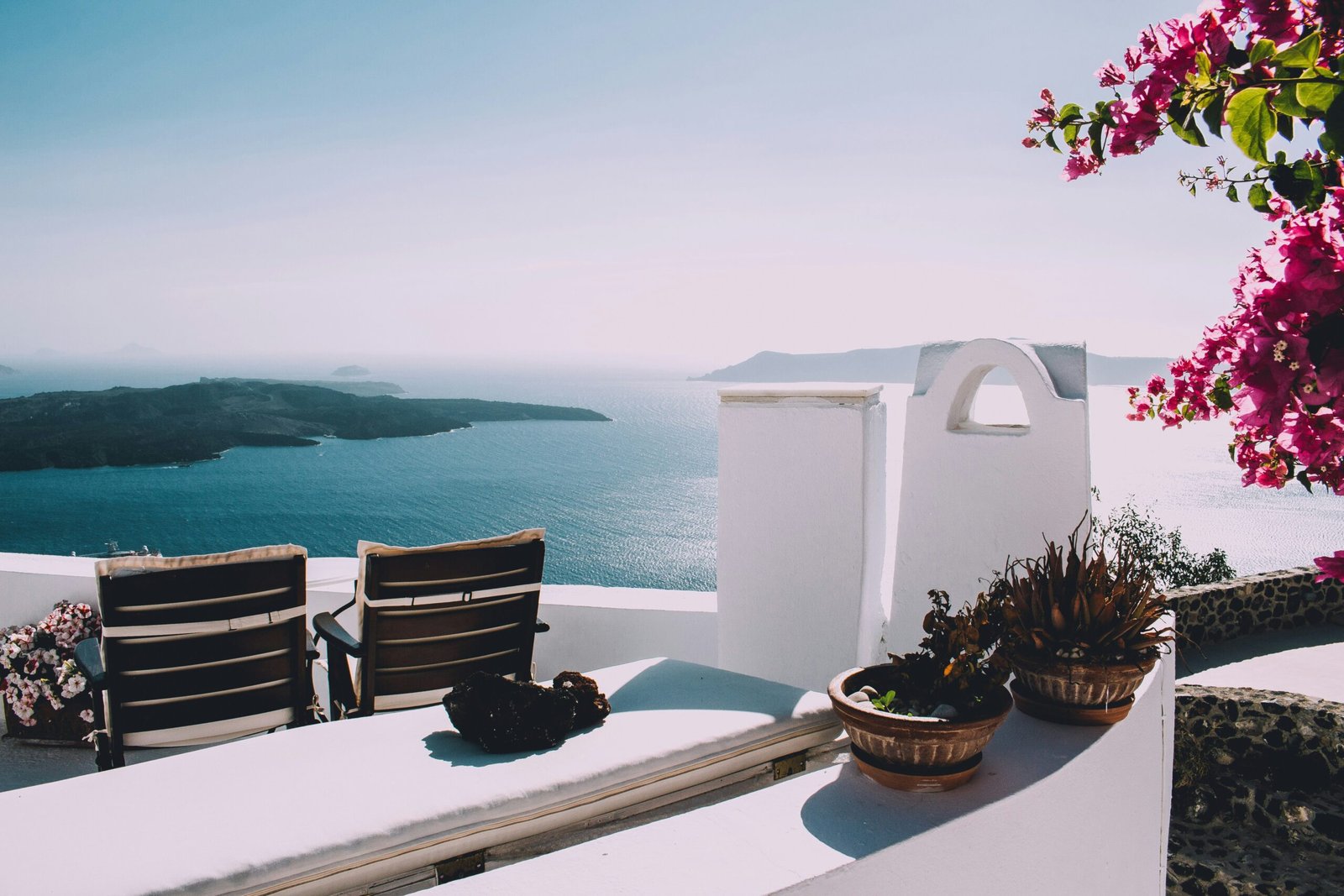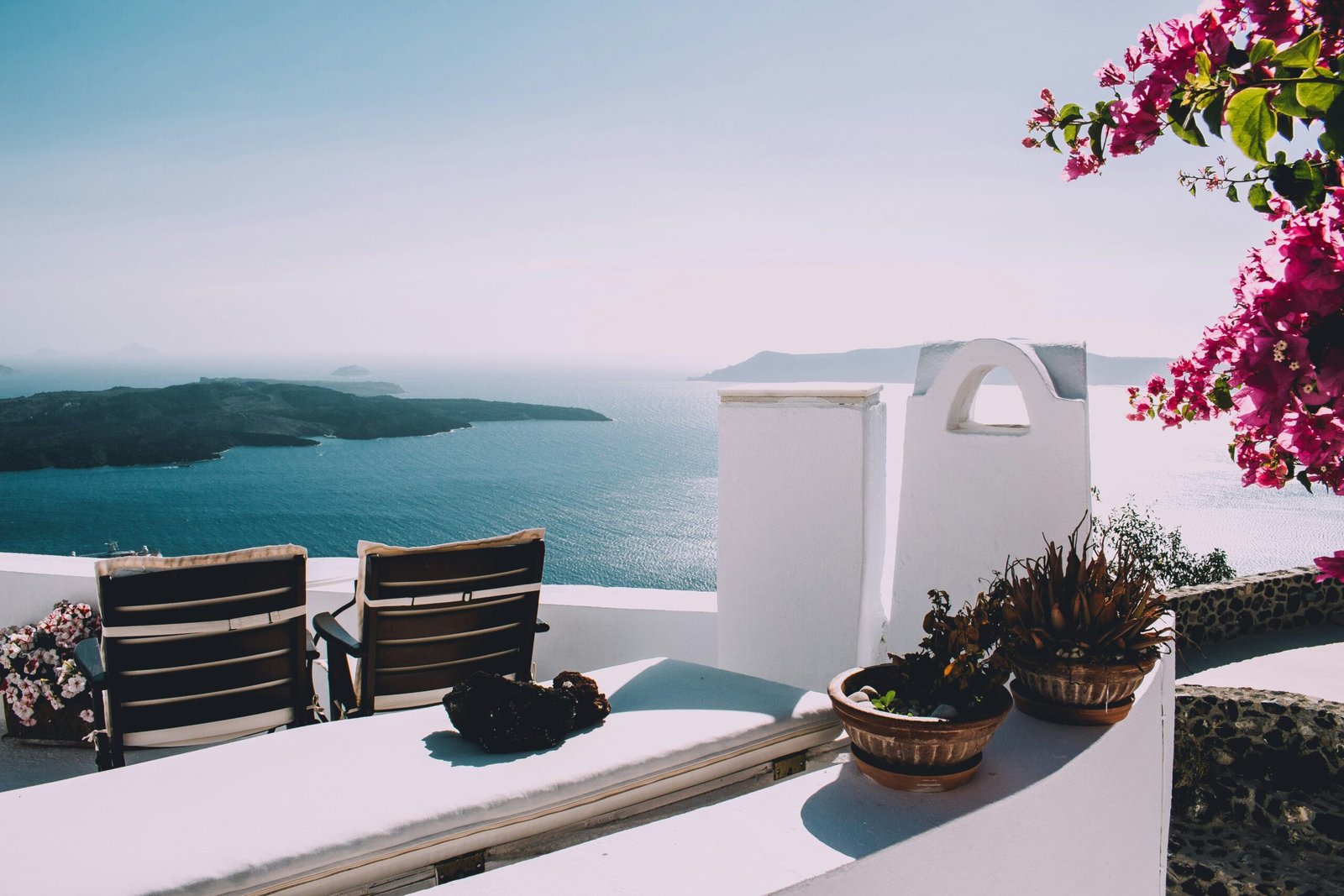Introduction to Ireland: A Land of Myths and Landscapes
Ireland, often referred to as the Emerald Isle, is a captivating destination that boasts a remarkable history, vibrant culture, and stunning natural vistas. Renowned for its lush green landscapes, Ireland’s topography ranges from rolling hills and dramatic coastlines to tranquil lakes and rugged mountains. Each region has its distinct charm, inviting visitors to explore its myriad wonders.
The rich cultural heritage of Ireland, steeped in ancient myths and legends, is reflected in its folklore, music, and literature. The land has produced renowned writers such as James Joyce, W.B. Yeats, and Samuel Beckett, whose works continue to inspire and resonate worldwide. This literary legacy, combined with Ireland’s traditional music, creates an immersive experience for travelers eager to delve into the local culture.
Historical landmarks dot the landscape, from the ancient megalithic sites of Newgrange to the medieval castles that narrate stories of times long past. Visitors can wander through picturesque towns and cities, such as Dublin, Galway, and Killarney, each offering a unique ambiance, colorful architecture, and welcoming inhabitants. The culinary scene, featuring fresh local ingredients and traditional dishes like Irish stew and soda bread, further enriches the travel experience.
Moreover, Ireland’s renowned hospitality, often referred to as “The Craic,” makes every visitor feel at home. The Irish people take pride in their traditions and take joy in sharing them with others, ensuring an unforgettable journey. Whether you seek adventure through outdoor activities, relaxation in serene landscapes, or a cultural deep dive, Ireland presents a compelling blend of experiences that cater to all types of travelers.
As we proceed, this guide will delve deeper into the enchanting aspects of Ireland, helping you uncover the treasures this remarkable island has to offer.
Best Time to Visit Ireland: Seasonal Insights
When considering a trip to Ireland, understanding the distinct seasons and their respective offerings is crucial for an enjoyable experience. The weather in Ireland can be quite unpredictable, hence knowing what to expect during each season will enhance your visit.
Spring, spanning from March to May, is often regarded as one of the best times to explore the Emerald Isle. The landscape bursts into bloom, with vibrant flora adorning the countryside, making it an excellent period for scenic walks. Additionally, local festivals, such as St. Patrick’s Day in March, attract numerous visitors, offering a glimpse into the rich Irish culture. However, travelers should prepare for occasional rain showers, as spring weather can be temperamental.
Summer, from June to August, boasts the warmest weather, with temperatures averaging around 15 to 20 degrees Celsius (59 to 68 degrees Fahrenheit). This season sees a peak in tourist activity, particularly in popular cities such as Dublin and Galway. Numerous outdoor festivals and events, including music festivals and food markets, take place during these months. While the vibrant atmosphere is appealing, travelers should book accommodations well in advance and anticipate larger crowds.
Autumn, occurring from September to November, offers a unique charm as the leaves begin to change colors, creating picturesque landscapes. The weather remains relatively mild, making it an ideal time for hiking and exploring the stunning countryside. Furthermore, with the summer crowds dissipating, visitors can enjoy a more tranquil experience. However, be prepared for increased rainfall as winter approaches.
Lastly, winter, from December to February, brings a quiet beauty to the emerald pastures. While temperatures can drop, the scenery, particularly in more rural areas, transforms into a serene winter landscape. This season is marked by festive celebrations, such as Christmas markets and local traditions. Though many attractions may have reduced hours, a winter visit offers an intimate glimpse into Irish culture without the hustle and bustle of peak season.
Top Destinations in Ireland: Must-See Places
When planning a trip to Ireland, travelers are met with a diverse range of destinations that capture the essence of this enchanting country. Among these, Dublin stands out as the vibrant capital, renowned for its rich history and cultural offerings. Visitors can explore the historic Trinity College, home to the impressive Book of Kells, or wander through the cobbled streets of Temple Bar, filled with lively pubs, galleries, and bustling markets. Dublin’s numerous museums, such as the National Museum of Ireland and the Irish Museum of Modern Art, provide a deeper insight into the nation’s heritage.
Another top destination worth visiting is Galway, often referred to as the cultural heart of Ireland. This charming city presents an artistic atmosphere, with numerous festivals and events throughout the year. Tourists can stroll along the scenic Salthill Promenade, enjoy traditional Irish music in local pubs, and discover the vibrant Latin Quarter filled with shops and eateries. Galway also serves as a base for exploring the stunning landscapes of Connemara and the Aran Islands, each offering unique experiences and breathtaking views.
The Wild Atlantic Way, one of the world’s longest coastal routes, is another must-see. Stretching over 2,500 kilometers, this iconic drive showcases the rugged beauty of Ireland’s west coast, featuring dramatic cliffs, sandy beaches, and charming coastal towns. Highlights along this route include the Cliffs of Moher, which provide panoramic views of the Atlantic Ocean, and the charming village of Doolin, famous for its traditional music scene.
History enthusiasts should not miss the Rock of Cashel, a striking archaeological site known for its remarkable medieval architecture. This site has a captivating backstory, as it is said to be the place where St. Patrick converted the King of Munster to Christianity. Visitors can explore the ancient stone structures and enjoy the stunning views of the surrounding countryside.
Cultural Experiences: Embracing Irish Heritage
Traveling in Ireland offers more than just picturesque landscapes; it provides an opportunity to immerse yourself in a rich tapestry of cultural experiences that reflect the nation’s unique heritage. From traditional music sessions in lively pubs to vibrant dance performances, there is a profound appreciation for the arts that resonates throughout the country. Irish music, deeply rooted in centuries of folklore, invites travelers to participate by joining local gatherings where melodies are shared and stories told, giving insight into the collective spirit of the Irish people.
One cannot fully appreciate Ireland without indulging in its culinary delights. The traditional Irish fare celebrates locally sourced ingredients, making meals an experience in themselves. From hearty stews to freshly baked soda bread, the dishes reflect the agricultural bounty of the land. Additionally, food festivals, such as Taste of Dublin, provide a platform for tasting the best of Irish cuisine while learning about its historical influences and modern interpretations.
Cultural festivals throughout the year present numerous opportunities to engage with Irish traditions. Events like St. Patrick’s Day and the Galway Arts Festival showcase the nation’s artistic talents, featuring parades, live music, and dance performances that captivate locals and tourists alike. Participating in these celebrations fosters a deeper connection to the Irish way of life, allowing visitors to understand the historical significance behind various customs and practices.
Furthermore, visiting heritage sites such as the Rock of Cashel or the ancient ruins of Newgrange helps provide context to the cultural narratives that shape Ireland’s identity. Engaging with the past fosters a greater appreciation for the present, highlighting the enduring spirit of the Irish people. Thus, embracing Irish heritage is not only about observation; it is an invitation to partake in a vibrant cultural dialogue, ensuring each traveler leaves with unforgettable memories and a more profound understanding of the Emerald Isle.
Transportation in Ireland: Getting Around Made Easy
Traveling around Ireland can be both enjoyable and straightforward due to its diverse transportation options. Effective transportation planning enhances the overall experience for travelers exploring this beautiful country.
Public transport in Ireland is efficient, with options such as buses, trains, and trams catering to both urban and rural areas. The bus system, operated by Bus Éireann, connects various towns and cities, making it a viable choice for budget-conscious travelers. In urban areas like Dublin, the Dublin Bus service is comprehensive, with stops at numerous attractions, allowing riders to conveniently access major destinations. Additionally, Irish Rail provides train services between key locations including Dublin, Galway, and Cork, offering a scenic way to traverse the landscape.
For those who prefer driving, car rentals are widely available in cities and airports, providing a flexible option to explore Ireland at one’s own pace. Major car rental agencies maintain fleets of vehicles, including compact cars and larger vans suitable for families or groups. When planning to drive, it is crucial to familiarize oneself with the rules of the road, which include driving on the left side and adhering to speed limits, often posted in kilometers. Navigating the scenic rural roads can be particularly rewarding but may require attentiveness due to their winding nature and occasional narrow lanes.
Biking is increasingly popular for those seeking an eco-friendly way to explore. Cycling allows visitors to experience the breathtaking scenery of Ireland intimately. Various bike rental services are available in towns, and dedicated cycling routes, particularly along the Wild Atlantic Way, provide safe pathways for riders. Furthermore, many cities offer bike-sharing programs, making it easy for tourists to navigate urban environments without the need for public transport.
In summary, whether one opts for public transport, car rentals, or biking, the diverse transportation options available in Ireland ensure that traveling around this picturesque nation is accessible and convenient for all visitors.
Accommodation Options: Where to Stay in Ireland
When planning a trip to Ireland, one of the most critical components to consider is accommodation. With a rich variety of options available, travelers can choose from luxury hotels, charming bed and breakfasts, budget-friendly hostels, or even unique lodging experiences in castles. Each choice offers a distinct experience that can enhance your visit to this beautiful country.
Luxury hotels are abundant in major cities such as Dublin and Cork, providing travelers with top-notch amenities, fine dining, and exemplary service. These establishments typically feature spas, fitness centers, and are located near popular attractions, making them ideal for those looking to indulge in comfort during their stay. It’s not uncommon for such hotels to have packages that include guided tours or tickets to local events, further enriching the travel experience.
On the other hand, for those on a budget, Ireland offers numerous hostels, which provide a more economical alternative without sacrificing the camaraderie of fellow travelers. Hostels often provide shared accommodations, but many also feature private rooms for travelers seeking a bit more privacy. This type of lodging is prevalent in cities and tourist hotspots, allowing easy access to the vibrant local culture.
For a quintessential Irish experience, consider staying in a bed and breakfast. These accommodations, often family-run, offer a personal touch, allowing guests to enjoy homemade breakfast and local hospitality. Many B&Bs are located in picturesque villages or scenic countryside areas, making them an excellent base for exploring the surrounding beauty.
Additionally, adventurous travelers may want to experience lodging in a castle. Various castles have been converted into hotels, offering a majestic stay reminiscent of Ireland’s storied past. These unique locations provide not only comfortable amenities but also a chance to immerse oneself in Ireland’s rich history and culture.
When choosing where to stay, consider factors such as location, available amenities, budget, and the kind of experience you desire. Each type of accommodation presents its advantages, ensuring that every traveler can find a fitting place to rest after exploring the wonders of the Emerald Isle.
Cuisine and Drinks: A Taste of Ireland
The culinary landscape of Ireland offers a rich tapestry of flavors, showcasing traditional dishes that reflect the country’s heritage and culture. At the heart of Irish cooking is an emphasis on local and seasonal ingredients, which contribute to the authenticity and quality of the cuisine. Renowned for its hearty meals, Ireland’s traditional fare includes iconic dishes such as Irish stew, which typically consists of lamb or beef simmered with root vegetables and herbs. Another beloved dish is colcannon, a comforting mash of potatoes and greens, often enjoyed during festivities.
Seafood holds a significant place in Irish gastronomy, particularly along the coastal regions. Dishes like “coddle” hailing from Dublin, a warming broth with sausages and potatoes, exemplify the diversity and robust flavors of Irish food. Additionally, many regional specialties can be discovered across the country, such as the famous soda bread, often served warm with butter. From the rugged cliffs of the West to the serene shores of the East, local ingredients and recipes vary, adding to the unique experience of tasting Ireland’s culinary offerings.
Complementing traditional Irish cuisine are two popular beverages: Guinness and Irish whiskey. Guinness, the iconic stout, is not merely a drink but an essential part of Irish identity, celebrated for its rich flavor and creamy texture. For those who prefer spirits, Irish whiskey presents a smooth and complex option for both sipping and mixing. Many pubs across the country offer tasting experiences for enthusiasts eager to learn more about these beverages, often pairing them with local dishes.
Dining in Ireland is not limited to traditional establishments; many modern restaurants are successfully merging old recipes with contemporary culinary techniques. It is advisable for food enthusiasts to seek out establishments that emphasize local sourcing and regional specialties, ensuring a memorable journey through the flavors of Ireland.
Outdoor Adventures: Exploring Ireland’s Natural Beauty
With its breathtaking landscapes and diverse terrain, Ireland is an outdoor enthusiast’s paradise. From the rugged cliffs of Moher to the serene shores of Killarney National Park, the country offers a multitude of opportunities for hiking, biking, and various recreational activities that showcase its stunning natural beauty. Nature lovers will delight in the well-marked trails that traverse the lush countryside, rolling hills, and coastal paths, rewarding adventurers with panoramic views and an opportunity to immerse themselves in the emerald scenery.
Hiking is one of the most popular ways to experience Ireland’s picturesque landscapes. Notable trails include the renowned Wicklow Way, which invites trekkers through a mesmerizing blend of green mountain ranges, woodlands, and shimmering lakes. Meanwhile, the Ring of Kerry presents a unique chance to explore beautiful coastal paths and quaint villages, offering the perfect blend of challenge and awe-inspiring views. Each step along these trails reveals the intricacy of Ireland’s flora and fauna, as well as its rich history through ancient ruins and sacred sites that dot the landscape.
Biking is another excellent way for adventurers to discover Ireland’s scenic beauty at a more exhilarating pace. The 240-kilometer Great Western Greenway in County Mayo provides a flat, off-road route that meanders through charming villages, breathtaking lakes, and dramatic coastlines. This trail allows cyclists to absorb the surroundings while enjoying invigorating exercise. Additionally, there are numerous mountain biking trails throughout the country, accommodating riders of various skill levels, each promising thrilling rides amid stunning backdrops.
Coastal walks along Ireland’s Atlantic shores offer a unique perspective of its natural beauty. The Wild Atlantic Way stretches over 2,500 kilometers, featuring spectacular viewpoints such as Slea Head and the Cliffs of Moher. These coastal routes invite visitors to witness dramatic ocean waves crashing against rugged cliffs while observing an array of seabirds and marine life. Ireland’s commitment to outdoor exploration fosters a spirit of adventure, making it an irresistible destination for nature enthusiasts seeking to experience its unparalleled landscapes.
Safety Tips and Travel Advice for Visiting Ireland
Traveling to Ireland can be an enriching experience filled with unique cultural encounters. However, it is essential to prioritize safety and equip yourself with the necessary knowledge for a trouble-free visit. One of the first steps for travelers is to familiarize themselves with local laws and customs. For instance, understanding and respecting the legal drinking age, which is 18 years, can prevent potential issues in social settings.
Health precautions are also vital while visiting the Emerald Isle. Visitors should ensure they are up-to-date on routine vaccinations. Although Ireland has a well-functioning healthcare system, it is prudent to have travel insurance that covers medical expenses, as this will offer peace of mind in case of unforeseen health issues. When traveling in rural areas, packing a basic first-aid kit is advisable, as access to medical facilities may vary. Additionally, drinking tap water is considered safe; however, bottled water is available for those who prefer it.
Being aware of your surroundings and engaging in situational awareness can enhance personal safety during the trip. Avoiding poorly-lit areas at night and keeping belongings secure can go a long way towards safeguarding against theft. Alongside personal safety, travelers should also be cautious while on the roads. Ireland’s driving culture may differ from what some tourists are accustomed to, with cars traveling on the left side. It’s important to familiarize yourself with local driving regulations and road signs if you plan to rent a car.
In engaging with the friendly locals, travelers should observe social norms, such as polite greetings and respectful behavior in public spaces. Compliments and appreciation are often reciprocated, contributing to a pleasant environment. By taking these safety tips into account, visitors can focus on enjoying the breathtaking landscapes and rich culture that Ireland has to offer.





